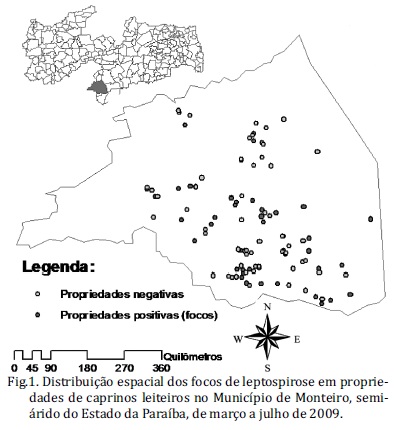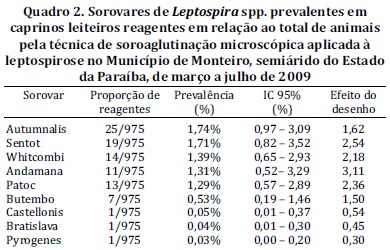This study aimed to determine the prevalence of positive dairy goat herds and seropositive animals for leptospirosis in the semiarid region of Paraíba state, Brazil. Sampling was designed to determine the prevalence of positive herds (foci) and seropositive animals for leptospirosis. A total of 975 serum samples were collected from goats of 110 dairy herds in the Monteiro municipality, Western Cariri microregion of Paraiba. For the serological diagnosis of leptospirosis the microscopic agglutination test (MAT) was carried out using 24 Leptospira spp. serovars as antigens. A herd was considered positive when existed at least one seropositive animal. The prevalence of positive herds and seropositive animals were 43.6% (95% CI = 34.2-53.4%) and 8.7% (95% CI = 58.7-12.9%) respectively. The most frequent serovars in goats were Autumnalis (1.74%; 95% CI = 0.97-3.09%), Sentot (1.71%; 95% CI = 0.82-3.52%) and Whitcomb (1.39%; 95% CI = 0.65-2.93%), and by herd, serovars Autumnalis (10.9%; 95% CI = 5.8-18.3%), Whitcomb (8.2%; 95% CI = 3.8-15.0%) and Sentot and Patoc (7.3%; 95% CI = 3.2-13.8%) were the most frequent. It is suggested that leptospirosis is spread in goats in the region, and that there is need to implement control and preventive measures in order to reduce infection and economic losses, and to avoid possible transmission of infection to humans.
Leptospira spp.; small ruminants; dairy goats; epidemiology







